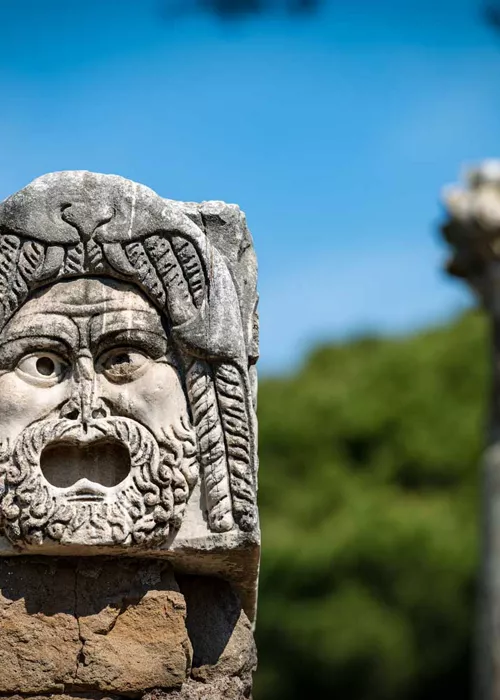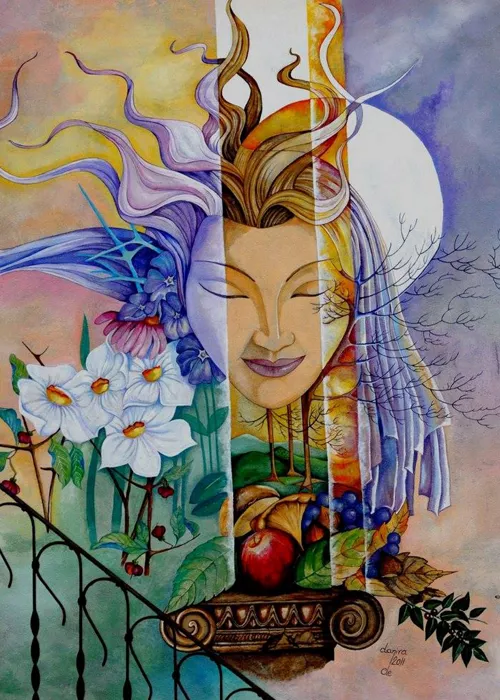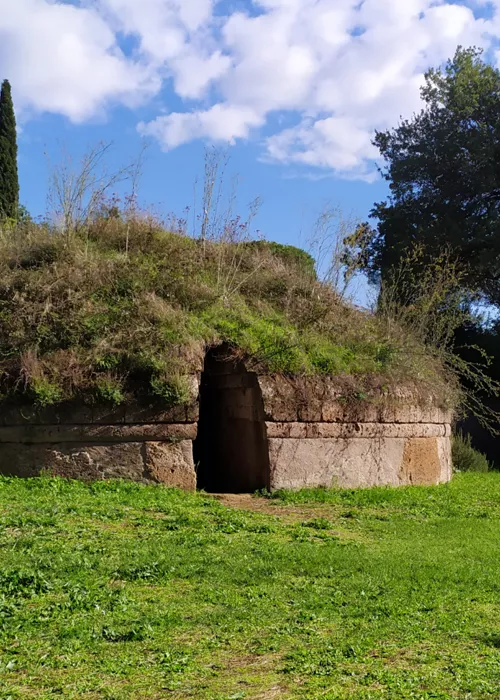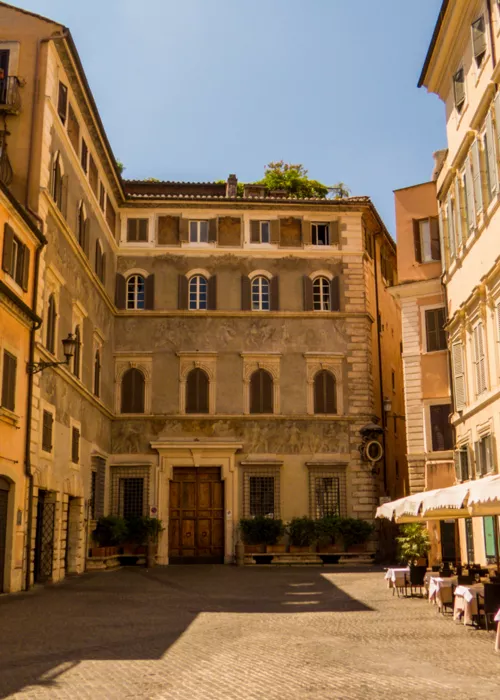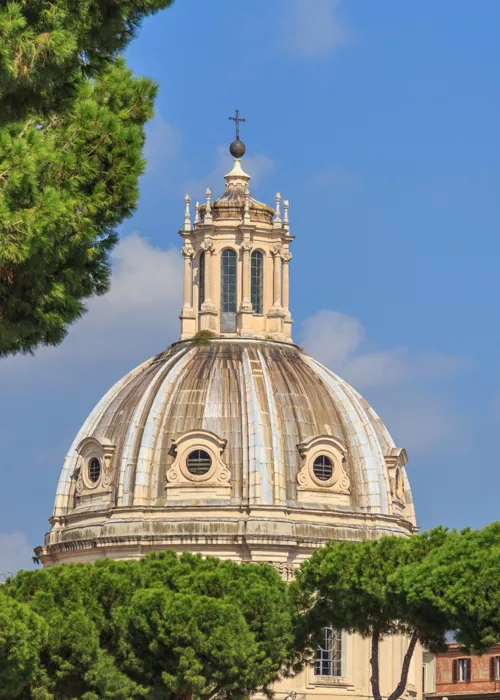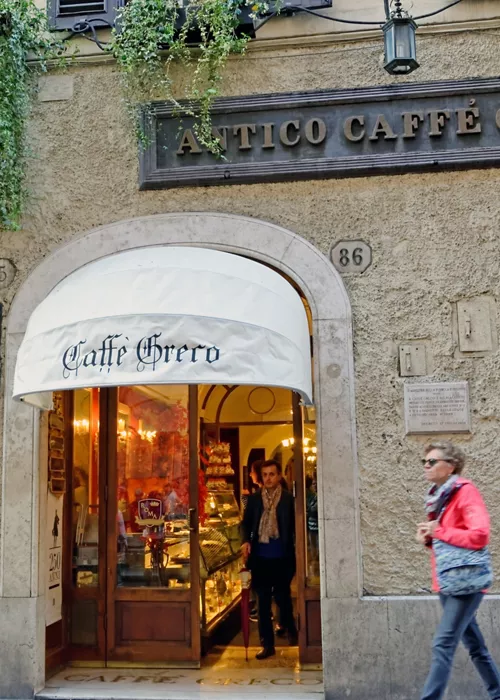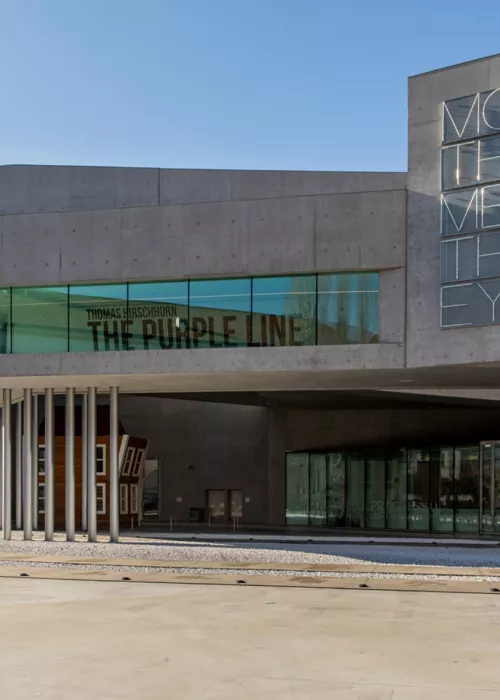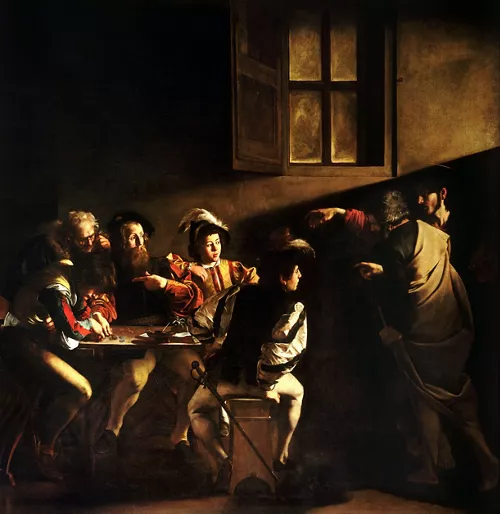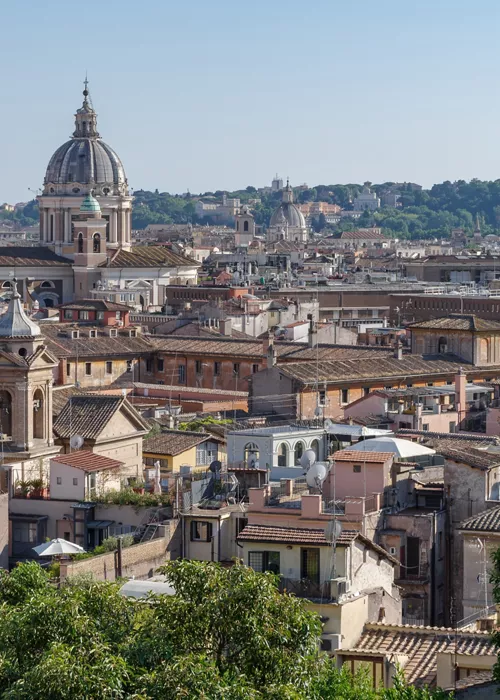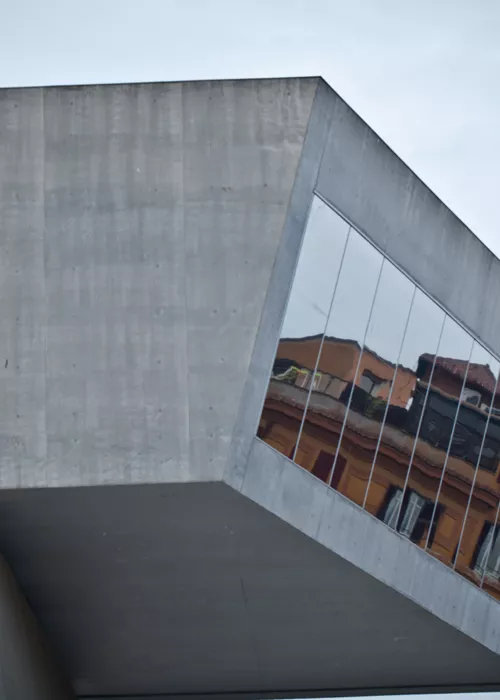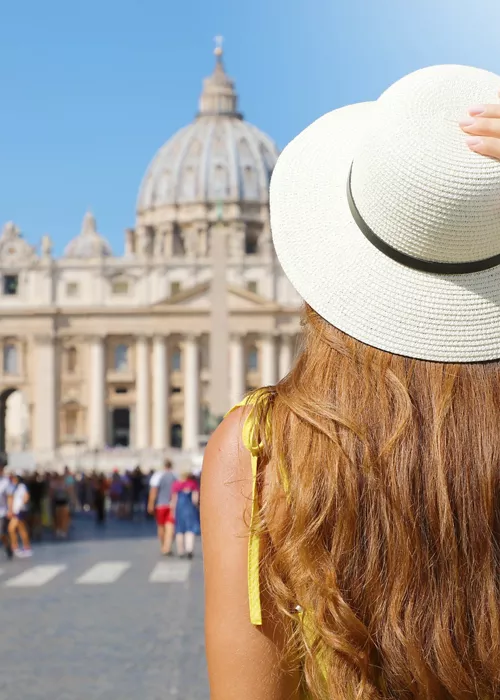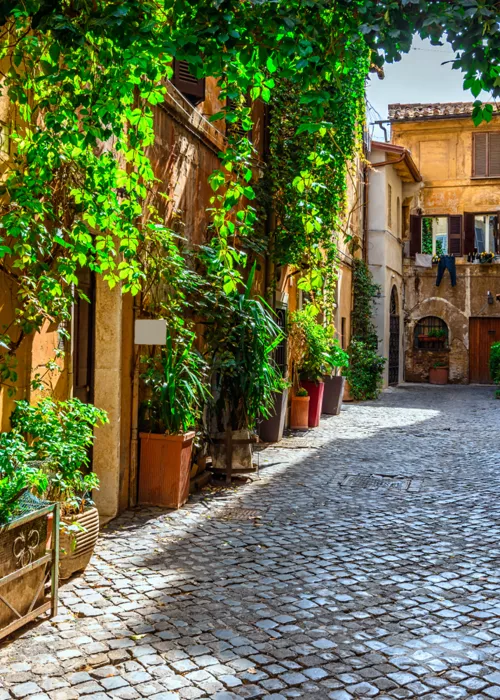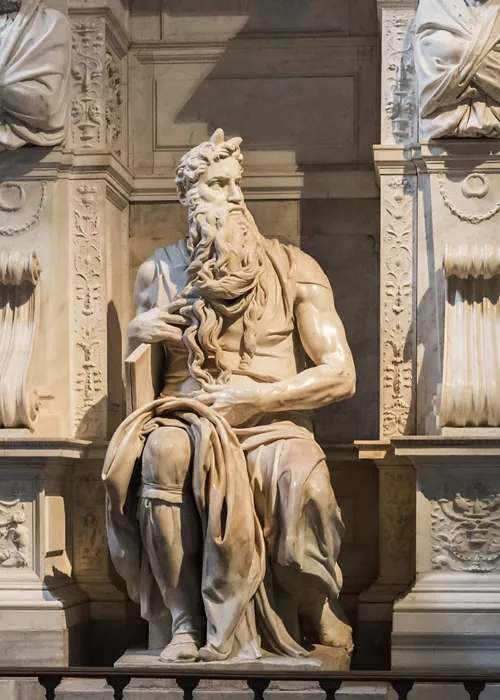The 2025 Jubilee, the Rome of pilgrims through the 13 Jubilee churches
6 minutes

Index
In 2025, the Church celebrates the ordinary Jubilee, the holy year that the Pope has convoked periodically since 1300 and which marks an important milestone for the Catholic world.
To obtain an indulgence, the faithful go on a pilgrimage to Rome, and when they arrive, they must go to confession, receive communion, pray and perform a work of piety, mercy or penance. The places where these acts of faith are performed are the Jubilee Churches.
In Rome, the most famous of these are St. Peter's, St. John Lateran, St. Paul Outside the Walls and St. Mary Major, but there are also other Jubilee churches in the city.
For the 2025 Jubilee, Pope Francis has identified places of worship in the city in which worshippers can gather and where religious teachings can take place in various languages. Let's discover them, one by one, as if we were on a journey, step by step towards the heart of the city.
A sanctuary in the Ardeatina countryside

We start outside of Rome, to the south, along the Via Ardeatina, among the hills bordering the Appian Way Regional Park. The first stage on the journey to the heart of the Jubilee city is the Shrine of Our Lady of Divine Love, already a place of pilgrimage since the second half of the 18th century, built about ten kilometres from the Appian Way and 12 km from the Church of Domine Quo Vadis.
The foundation of the shrine is reputed to have been in response to the protection given by the Virgin Mary to a pilgrim lost in the countryside in 1740. In addition to testimonies of faith, this place is also known for the vow of protection that the Romans made during World War II and has even been featured in the seventh art. In fact, the Shrine was portrayed through the lens of Federico Fellini in "The Nights of Cabiria".
Its artistic heritage includes the Virgin of Divine Love, a Byzantine religious icon that represents the link between the breath of God and the Holy Spirit. The sanctuary was enlarged shortly before the year 2000. The renovated structure was consecrated by John Paul II in 1999.
Go to the Aventine Hill, towards the Church of Santa Prisca

The second stage takes you into Rome, to an area that is now central but quiet and not very crowded. Among the greenery of public and private gardens, there are evocative churches such as Santa Sabina, Sant'Alessio and the Jubilee Church of Santa Prisca. To reach the latter you walk along the quiet streets of the Aventine Hill, until you pass Piazza del tempio di Diana.
The Church of Santa Prisca has borne witness to some very ancient events. Erected on the remains of the house of the martyr Prisca, who was killed in around the middle of the 1st century at the time of Emperor Claudius, the church was rebuilt at the time of Callistus III in 1456. Underneath its naves, the original structures of the place of worship are still preserved, such as the 1st century house or the spaces used for the worship of the god Mithras, depicted in the frescoes that tell of his musical feats.
The churches of Santa Maria in Monserrato degli Spagnoli and San Paolo alla Regola

We are now in the "Renaissance district", between Via del Banco di Santo Spirito and Via dei Banchi Nuovi, Piazza Navona, Piazza Farnese and Campo de' Fiori. From the Caelian Hill, you descend towards Lungotevere Aventino.
Amongst the rich residences and popular dwellings, a few churches can be found. The two jubilee churches chosen by the Pope are San Paolo alla Regola and Santa Maria in Monserrato degli Spagnoli.
It seems that the Church of San Paolo alla Regola was built around the first Roman dwelling of the saint, who, after a life of evangelisation, was ordered killed by Nero in around 64 AD. However, the building of the place of worship officially dates back to 1186. The church was completely rebuilt at the end of the 17th century. There are many works inside, from the Stories of the Life of St. Paul by Luigi Garzi to those by Calandrucci.
The second Jubilee Church, Santa Maria in Monserrato degli Spagnoli, is definitely of more recent construction. Started according to a design by Antonio da Sangallo the Younger in 1518, it was completed between 1673 and 1675 as the church of the Aragonese and Catalans. It is now the national church of the Spanish. It preserves many works of art, and to see a funeral monument sculpted by Bernini, you must enter the Spanish College, attached to the church.
In Umbertine Rome, at the "Chiesa Nuova" of Santa Maria in Vallicella

In this part of the city, you walk along the main thoroughfare of Umbertine Rome, with its neo-baroque expressions of 19th-century bourgeois Rome and the residences of the former papal nobility. Here you will find one of the churches where pilgrims will gather for catechesis, which will be given in many languages of the world.
The Church of Santa Maria in Vallicella is linked to the figure of St. Philip Neri, founder in 1551 of the "Oratory", which was erected in 1575 by Gregory XIII as the Congregation of the Oratory. Its origins date back to the 12th century. The church's name refers to the depression which was believed to lie over the "Tarentum", the underground sanctuary that was the centre of the worship of the infernal divinities Dis Pater and Proserpina. The church was rebuilt starting in 1575, from which it became commonly known as the "Chiesa Nuova".
Once inside, you can admire many works of great value that embellish the rich Baroque interior. In the Spada Chapel, you can admire the Madonna and Child and Saints Charles Borromeo and Ignatius of Loyola by Carlo Maratta. The presbytery houses masterpieces from the Roman period by Pieter Paul Rubens (1606–1608), while an extraordinary wealth of marble decoration covers the Chapel of San Filippo Neri (1600–1602).
In the heart of Rome, up to the Vatican and beyond

It is not hard to notice that a huge number of buildings and churches are clustered together in this small patch of land extending through the heart of Rome. Here the bend in the Tiber widens as it draws nearer to the Vatican.
Between Via dei Banchi Nuovi, Via del Governo Vecchio, Via di San Pantaleo and Via di Torre Argentina and Via dei Banchi Vecchi, Via del Pellegrino, Campo de' Fiori and Via dei Giubbonari, which follow the outline of ancient Rome, there is the greatest concentration of jubilee churches: San Salvatore in Lauro, Santa Maria dell'Orazione e Morte, Santa Caterina da Siena, Santa Spirito dei Napoletani, Santa Maria del Suffragio and San Giovanni Battista dei Fiorentini.
Among these, San Salvatore in Lauro stands out as a true shrine in the heart of Rome. Since 1600, it has been the Shrine of the Virgin of Loreto and houses one of the oldest laurentine icons. Since 2007, it has become a place dedicated to the figure of Padre Pio of Pietrelcina and preserves important relics of the Saint.
The last church is in the Colonna district, named after the column of Marcus Aurelius, between Via del Corso (an urban segment of ancient Via Flaminia) and the Pincian Hill. Here is the Jubilee Church of Sant'Andrea delle Fratte: named in the 12th century as "Sant'Andrea de hortis" because it lay outside of the city, it showcases the architecture of Borromini. His intervention, in the second half of the 17th century, can be seen in contrast to the perpendicular lines of the streets surrounding the church. Next to the apse stands a stunning square bell tower. Once inside the single barrel-vaulted nave, it is well worth going to the sides of the presbytery to admire the marble angels by Gian Lorenzo Bernini (1668–69), a sight both satisfying and auspicious for the Jubilee.


